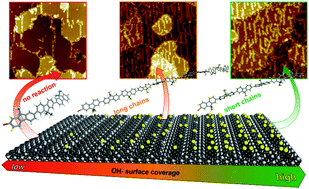On-surface polymerization on a semiconducting oxide: aryl halide coupling controlled by surface hydroxyl groups on rutile TiO2(011)†
Abstract
Based on scanning tunneling microscopy experiments, we show that the covalent coupling of aryl halide monomers on the rutile TiO2(011)-(2 × 1) surface is controlled by the density of surface hydroxyl groups. The efficiency of the polymerization reaction depends on the level of surface hydroxylation, but the presence of hydroxyl groups is also essential for the reaction to occur.


 Please wait while we load your content...
Please wait while we load your content...